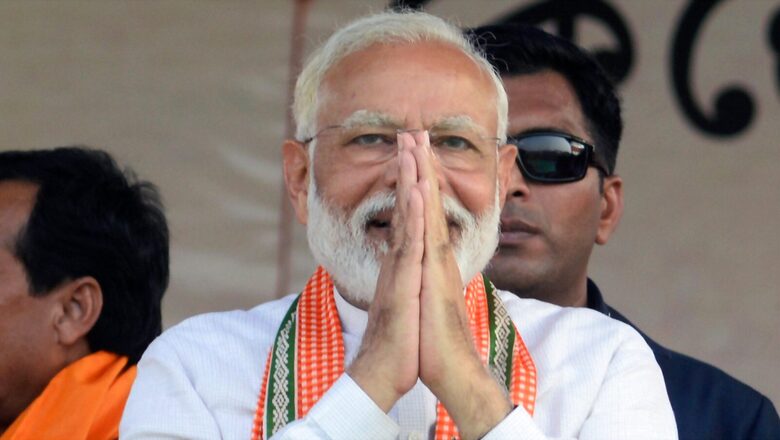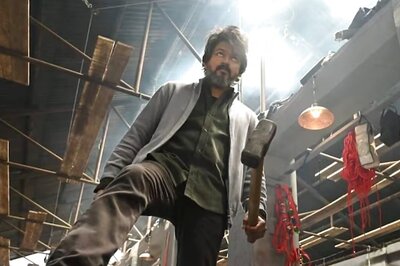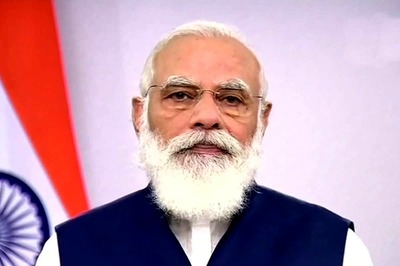
views
One of the biggest achievements of the Modi government has been the complete turnaround of the northeastern states. Seamless connectivity, brisk infrastructure development, peace, stability and inclusiveness have been the hallmark of the transformation that these states have witnessed from 2014 onwards. In fact, this transformation that the region has witnessed in the last nine years makes one wonder why the same was held back for over seven decades. As some may call it, was it the ‘tyranny of distance’, the Congress party’s sheer inertia in moving beyond the Lutyens and into the northeastern hinterlands to comprehend what really ailed the region? The step-motherly treatment of the region was particularly disturbing, considering there is ample evidence to trace the region’s deep-rooted connect with Bharat from time immemorial.
In the epic Mahabharata, Arjuna travelled the length and breadth of Bharat during Pandavas’ exile. When he came to ancient Manipur, he met Chitrangada, the daughter of the king of Manipur, and asked her father Chitrabahana for her hand in marriage. The king stated that according to the matrilineal customs of his people, the children born of Chitrangada were heir to Manipur, and hence could not be taken away from Manipur. Arjuna agreed to the stipulation that he would take away neither his wife nor any children borne by her from Manipur and wed the princess on this premise. They begot a son who they named Babruvahana. Much later, when Arjuna got cursed by the Vasus after he killed Bhishma in the Kurukshetra war, Uloopa, a widow Naga princess, redeemed Arjuna from the curse.
The famous Kamakhya Devi temple in Guwahati dates back 1400 years, though the reference to Kamakhya Devi can be traced back to Kalika Purana.
Kalika Purana, an ancient work in Sanskrit, describes Kamakhya as the yielder of all desires, the young bride of Shiva, and the giver of salvation. Shakti is known as Kamakhya.
The big question is — why was the Congress so apologetic about the Northeast being a part of India?
During the 1962 China war, Nehru’s sheer helplessness in his address to the people of Assam after the fall of Bomdilla to Chinese troops continues to stoke the flames in Assam. The common sentiment is that Nehru had abdicated his responsibility towards saving Assam and had Chinese troops gone all out, India would have lost a much larger part of Assam to the Chinese.
On 5 March, 1966 the then Prime Minister, Indira Gandhi, acting against Mizo National Front, got the Indian Air Force (IAF) to bomb civilian territory in Mizoram. The attempt to quell an uprising left deep scars on the psyche of the state and led to an insurgency that lasted 20 years. Dr Manmohan Singh, who was a Rajya Sabha member from Assam during his term as PM, never once spoke on an issue specific to the Northeast.
With this kind of cavalier, escapist attitude of the Congress party, for decades the region continued to be a breeding ground for militancy. There were around 600 Chinese incursions during the United Progressive Alliance (UPA) era, a majority of them in the Northeast, which was conveniently ignored by New Delhi. The region suffered from the ‘tyranny of distance’. Neither was any attempt made to improve the connectivity of the Northeast with other parts of the country; the lazy Congress governments took that as an alibi to keep the Northeast de-prioritised infinitely.
PM Modi’s vision for the Northeast
Prime Minister Narendra Modi saw immense potential for growth in the northeastern states and embarked upon his ambitious Look East Policy which has now evolved into Act East Policy. He envisaged the northeastern states as India’s gateway to Southeast Asia. To realise this potential, work is aggressively underway on projects like India-Myanmar-Thailand trilateral highway and the Agartala-Akhaura rail project. Once complete, these would be game-changers for the region.
In the last nine years, the number of airports in the North Eastern Region (NER) have jumped from nine to 16, and the number of flights have increased from about 900 before 2014 to around 1900. Some northeastern states have made their way into India’s railways’ map for the first time and efforts are being made to expand the waterways also. The length of national highways, since 2014, has increased by 50 percent in the region.
The major ongoing Capital Road Connectivity projects in NER include an alternate two-lane highway from Bagrakote to Pakyong (NH-717A) (152 km) in the Sikkim-Kalimpong-Darjeeling region, four laning of Imphal–Moreh section of NH-39 (20 km), two laning of 75.4 km in Manipur, four laning of Dimapur-Kohima Road (62.9 km) in Nagaland, four laning of Nagaon bypass to Holongi (167 km) in Arunachal Pradesh and two laning of Aizawl–Tuipang NH-54 (351 km) in Mizoram.
The government is also working on improving digital connectivity in the northeast by increasing the optical fibre network. 5G will help further the development of the start-up ecosystem and the service sector among others in the region.
Modi government has also earmarked a pivotal role for the NER when it comes to natural farming. Through Krishi UDAN, farmers of the region are able to send their products across the country and the world. In fact, in the last 6 years, the region has reported an 85 percent growth in the export of agricultural products. It goes without saying that the improved infrastructure and communications have played crucial catalysts in this change.
With Manipur connected to the railway network earlier this year, now all northeastern states have access to basic rail connectivity. The Railways has embarked on another ambitious plan to invest over Rs 95,261 crore to execute 21 projects including connecting the state capitals of Manipur, Mizoram and Meghalaya by end of 2023 and Nagaland capital by 2026. For this, peace and stability were a must.
Now, when one looks back at the last nine years, incidents of insurgency have declined by 80 percent. The central government has withdrawn the Armed Forces Special Powers Act (AFSPA) from 60 percent areas of Assam. In Manipur’s six districts, AFSPA’s operation is limited to 15 police stations. In Arunachal Pradesh, only one district remains covered under AFSPA. In Nagaland, it has been lifted from seven districts and in Tripura and Meghalaya, AFSPA has been completely lifted.
Psychological barriers removed
More than statistics or data, a bigger parameter to measure the success of government measures is whether it has succeeded in bestowing a deeper sense of belongingness to the country. Has it removed the psychological barriers that prevented the northeast from being a part of the mainstream? This is where the government’s success has been exemplary.
Northeast India, today, has the highest-ever representation in the Union Council of Ministers wherein there are two cabinet ministers and three ministers of state. For the first time, a Member of Parliament from Tripura has found a place in the Council of Ministers. With Kiren Rijiju being given the all-important Law and Justice Ministry, there is a clear attempt to ensure that in the years to come, the northeast will be able to provide the highest levels of leadership to the country.
Assam Chief Minister Himanta Biswa Sarma has carved out a huge following for himself even outside the state and has been a star campaigner for the party in several Assembly elections in other states. The affable Nagaland BJP chief Temjen Imna Along has won hearts with his positive espousal of the Sanatan Dharma. No wonder that today, the BJP and its allies are in power in six out of the eight northeastern states, a feat that looked unimaginable before 2014.
Over the years, Nagaland’s biggest annual cultural extravaganza — the Hornbill Festival — has been attracting visitors from all parts of the country. PM Modi had inaugurated the Hornbill Festival in 2014, within months of becoming the prime minister.
From constantly being ignored over decades, the northeastern states are now the biggest reservoirs of India’s growth. The key to optimising this synergy is to create seamless cohesion of people from the NER across the country and curate cultural properties in all metros that celebrate the rich legacy of these states.
The writer is an author and BJP spokesperson. Views expressed are personal.
Read all the Latest Opinions here


















Comments
0 comment